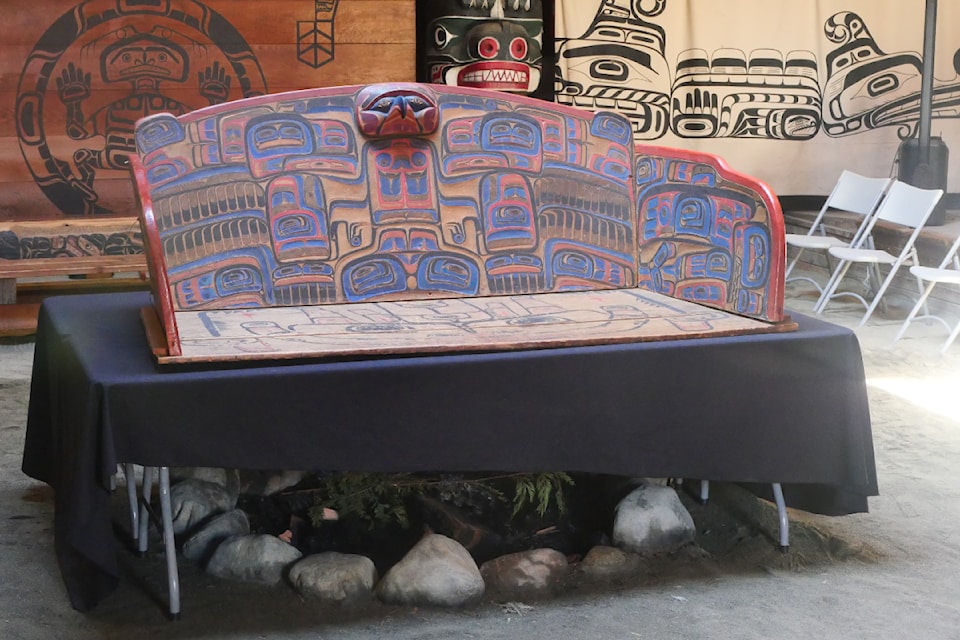On Friday, July 12, member of the Yisdaitxv Nation Steven Carpenter (84), great-grandson of Captain Richard Carpenter, got to see his ancestor's Chief Seat face-to-face for the first time, something he had only seen in photographs previously.
"I feel blessed," he said.
Carved by Captain Carpenter in the 1900s, the seat was an essential part of the culture of the Helitsuk Nation. In 1911, it was sold to the Royal BC Museum, where it stayed, eventually placed into separate boxes.
According to Elroy White, reparation adviser from Bella Bella, they only had the chance to look at the seat a few days before.
"We did not know how big it was," he said.
According to White, it is the fourth item the museum has given back, with three more — a pole, a front lift, and a card panel — going back to Bella Bella during the pandemic, where a more private ceremony took place.
"There are very few people involved in the reparations of the three objects," said White.
For their membership, it was deeply personal time, and it did not matter if those items went home with a special ceremony or not.
"It was important they just go home. It didn't matter how we did it. They had to go home," White said.
The Chief Seat will return to Bella Bella on July 24, and a big celebration will take place on July 25, but the nation has to figure out how to display it.
"We will have to have a museum built for them," added White.
Around 50 members of the nation were at Mungo Martin House, including chiefs, council members, archaeological/repatriation specialists, family members, dancers, and descendent of Captain Carpenter and Heiltsuk Nation Chief Marilyn Slett.
“The repatriation of the chief’s seat, is a powerful and emotional moment for our family and the Heiltsuk Nation,” said Slett. This is the first of his treasures to return home, so that we can all enjoy and benefit from his work. We thank the Royal BC Museum and Archives for their proactive approach to repatriation.”
Carpenters' work can be found throughout the world, but perhaps the most famous example is the giant canoe in the American Museum of Natural History.
Heiltsuk Nation carver Ian Reid said the Chief Seat is massive and made from yellow and red cedar.
"This piece contains all of the universe, and we must never forget that," said Reid, who added Carpenter would have used traditional brushes, often made from deer tails or porcupine quills, to paint the seat.
"His style of art was on its own. And it's beautiful. It's magical."
Even though this is a local story, about a local museum, this echoes what is happening worldwide, according to White, where people whose belongings were stolen or sold during colonialism are being returned to the cultures they were taken from.



